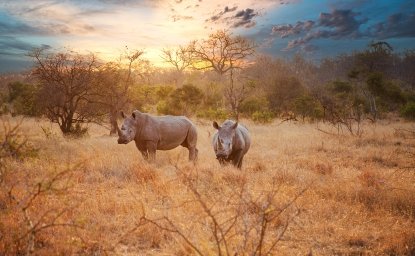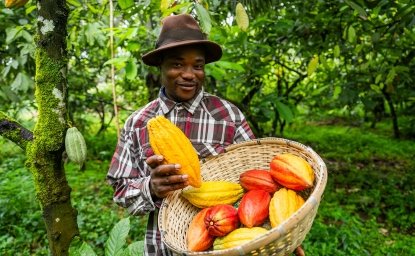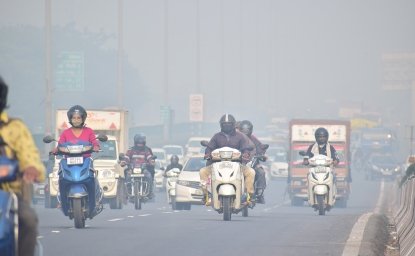
A blog of the Wilson Center

Only one sitting member of Congress has served with the Peace Corps.
I often trace the beginnings of my foreign policy and international development work back to the village school in Kenya where my wife Sue and I served as WorldTeach volunteers. That work presented many challenges, but the village was also ahead of many others in the area because a Peace Corps volunteer served there before us. I often point to my time as US ambassador to Tanzania as the high point of my career in foreign policy. When I entered the State House to present my credentials to President Jakaya Kikwete in 2007, a Tanzanian protocol officer proudly took me aside and related how he had once been taught by a Peace Corps volunteer.
When President John F. Kennedy established the Peace Corps in early 1961, he saw it as what we Americans colloquially refer to as a “two-for.” He believed that it would not only help developing countries meet their desperate need for skilled workers, but it would, as Peace Corps materials say, “bridge the cultural divide” between Americans and the rest of the world. Since volunteers would largely serve in rural communities and remote regions, they would extend the “American brand” to places that traditional diplomacy couldn’t reach.
Like his framing of the “space race,” JFK framed the Peace Corps as a national mission. An American purpose.
“For every young American who participates in the Peace Corps—who works in a foreign land—will know that he or she is sharing in the great common task of bringing to man that decent way of life which is the foundation of freedom and a condition of peace."
That appeal to young Americans worked. Within five years of its founding, more than 15,000 volunteers were serving in 52 countries. With each passing year, the Peace Corps refined the roles that volunteers would play, going from teachers and rural development workers to playing important roles in some of America’s best known development initiatives—programs like the President’s Emergency Plan for AIDS Relief (PEPFAR), the President’s Malaria Initiative (through Stomp Out Malaria in Africa or “STOMP”), and Feed the Future. In 2023 alone, despite still emerging from the COVID-driven suspension of most community-based programs, the Peace Corps educated more than 65,000 people on HIV prevention, planted 41,000 trees, provided basic education to over 10,000 students, trained approximately 2,200 individuals on entrepreneurship, and much more. In each community they touch, the work of volunteers has boosted America’s image, not only through their work product, but the values and ideals they represent.
What JFK didn’t realize—couldn’t have realized—was how many volunteers would go on to serve key roles in American public life. Returned Peace Corps volunteers (as former volunteers call themselves) have gone on to be cabinet secretaries, like Donna Shalala; governors, like Ohio’s Bob Taft; activists, like Carl Pope, the former executive director of the Sierra Club; diplomats, like Ambassadors Christopher Hill, Pam White, and Christopher Stevens; development leaders, like former USAID Administrator Peter McPherson and UNESCO’s Carol Bellamy; authors, like Paul Theroux; US senators, like Christopher Dodd and Paul Tsongas; and members of the House of Representatives, like Tom Petri, Tony Hall, and Christopher Shays. Returned Peace Corps volunteers have often gone on to be corporate leaders as well (like Reed Hastings, the founder of Netflix, and Bob Haas, Chair Emeritus of Levi Strauss). In 2019, USAID estimated that over 400 of its staff members were returned volunteers. All told, there are 240,000 former volunteers who have not only met JFK’s call to bring a “decent way of life” to distant communities around the world, but upon their return, have strengthened America’s communities and way of life too.
The reality is, however, that the number of Peace Corps volunteers and those applying to be volunteers is smaller than it was in earlier years. In 1966, there were more than 15,000 volunteers actively serving. As of April 2024, there were 2,600 Volunteers working in 58 countries. Some of this is clearly due to the uncertainties created by the COVID pandemic, as agency leaders couldn’t say for certain when and where the next class of volunteers would be serving. But there are simply fewer people applying and it has become harder for the Peace Corps to meet the demand that many countries have expressed. One way to quantify the thinning ranks of volunteers is to look at the agency itself. Historically, returned Peace Corps volunteers have made up a large part of the organization’s Washington, DC staff. In 2023, the agency reported a vacancy rate of 19.6%, up from 12.9% in 2021 during the pandemic’s peak.
My time as a WorldTeach volunteer is a huge part of my life—a huge part of who I am, both professionally and personally. Yes, it whetted my appetite for international development and foreign policy. But it also taught Sue and I invaluable lessons about how to distinguish what seems to be important from what really is. It taught us self-reliance, creativity, and the value of hard work. I pitch public service in general, and the Peace Corps in particular, every chance I get.
Strikingly, Congressman John Garamendi is the only sitting Member of Congress who served as a Peace Corps Volunteer. He and his wife, Patricia, were Peace Corps teachers in Ethiopia from 1966 to 1968. They taught 7th and 8th graders in their community and worked alongside community leaders making a range of services and resources available to area families. John is a fierce advocate for the Peace Corps and a strong voice for recruiting others to become volunteers. And he’s quick to say that he wouldn’t be who he is without the experience that he and wife had all those years ago in the Horn of Africa. As John puts it, “My wife Patti and I owe so much to our service in the Peace Corps. It inspired a lifetime of public service.”
There’s so much talk these days about the need to extend the reach of American soft power and to project American values in the era of “Great Power Competition.” We need the next US president to reaffirm JFK’s call for Americans to sign up for the “toughest job you’ll ever love” (as a peace Corps advertising campaign once termed it). We need to double and triple the ranks of volunteers for their sake, for the world’s sake, for OUR sake.
This blog was researched and drafted with assistance from Dhruvi Thakker and Camila Reitherman.
Author

Explore More in Stubborn Things
Browse Stubborn Things
Spying on Poachers

China and the Chocolate Factory

India: Economic Growth, Environmental Realities
